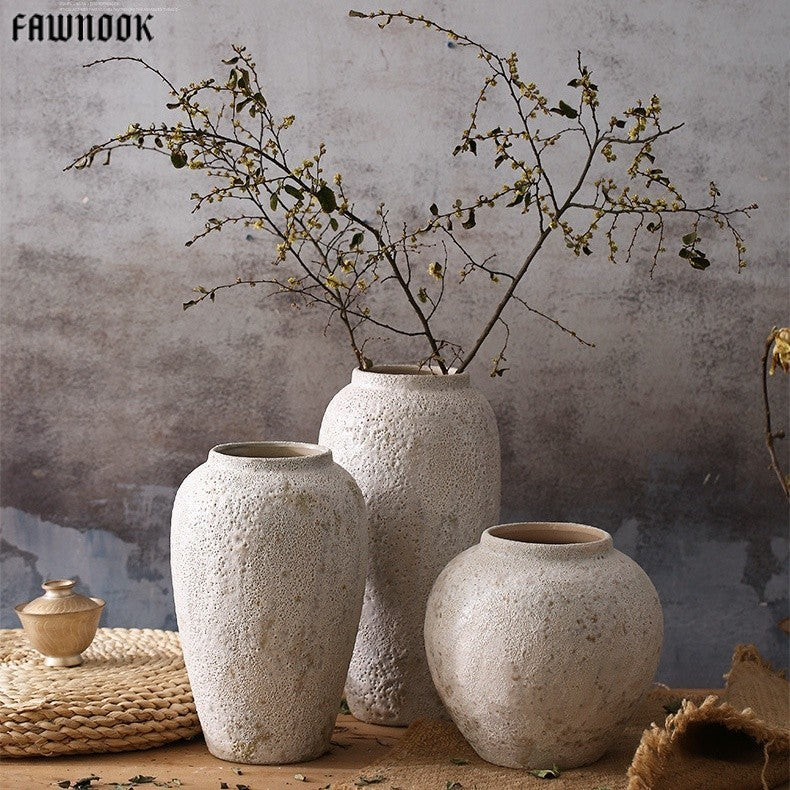A vase adds a touch of elegance to any room. It is a must-have in any home.
Before you start to arrange your flowers, you should make sure that the vase is squeaky clean. Trim the stems and remove thorns, leaves and buds that could carry bacteria.
It is also recommended that you change the water every two to three days. This helps to prevent bacterial growth which shortens the life of your flowers.
How to Put Flowers in a Vase?
Anyone can plop some flowers into a vase, but to create a stunning bouquet takes a little thought and technique. With the right arrangement techniques, your floral display will last longer and look more professional.
First, choose your flower stems carefully. Select only those that have healthy leaves and petals and that are free of blemishes or signs of insect damage. Aim for a focal flower that is the largest or most eye-catching, and surround it with smaller filler blooms and leaves that add interest and contrast. You’ll also want to make sure that your florals are the correct height for your vase, as this will help them maintain their shape and stay fresh.
Once you’ve selected your stems, trim them to the appropriate length, using clean scissors or a knife. Make an angled cut, which increases surface area and allows the stems to absorb water more efficiently. Next, place them in a container of cool water to hydrate and remove any airlocks. Finally, transfer them to your vase of choice and give the whole thing a good rinse before use.
To prolong the life of your floral display, keep it in a cool place out of direct sunlight. Also avoid positioning it near fans or heating vents, which will cause the flowers to fade more quickly.
Before placing your flowers in a vase, fill it halfway to 2/3 full with short stems of greenery (eucalyptus, ruscus, or fern fronds are great choices). This will create a network for the flower stems to cling to. Make sure that no leaves go under the waterline, as this will discolour the water and speed up fading.
When you’re ready to begin arranging your flowers, start with the greenery and work your way up. For the final touch, you can add a few small accent flowers for colour or texture, but it’s best to leave out any pollen-bearing anthers on lilies, as this will stain the water and lead to wilting. Finally, change the water regularly and recut the stems as needed to ensure the flowers continue to thrive.
How to Clean Glass Vases
Nothing brightens a room like fresh flowers, but they don’t last forever. After a few days, they start to wilt and leave behind scummy rings or murky water in your glass vase. If you want to use your Mother’s Day flowers for longer than a week or two, you need to know how to clean your flower vase and keep it looking new. Here are a few tips to help you get the job done quickly and easily.
Baking soda and vinegar are a common household cleaning solution, but they can also work wonders for your dirty-looking glass vases. Simply fill your vase with hot water and add a tablespoon of baking soda and a teaspoon of white vinegar. The chemical reaction will take care of any water stains or mineral deposits. Let the solution sit for a few minutes and then wipe away the residue to reveal a sparkling clean vase.
If your vase is particularly stubborn, try using an effervescent cleaner. These are typically used to clean orthodontic retainers or dentures, but they can also work well on your glass vases. Just fill your vase with warm distilled water and drop in one or two effervescent tablets until the fizz stops. After a few minutes, rinse the vase and then scrub away any remaining grime with a sponge, bottle brush or toothbrush.
Another quick and simple method is to make a homemade cleaning solution out of rice, vinegar and dishwashing liquid. Just fill your vase halfway with warm, soapy water and add a few drops of dishwashing liquid and two tablespoons of vinegar. Then, add a cup of uncooked rice and swish the mixture around for a few minutes so that the rice can buff away the stains. After a few minutes, drain the vase and then rinse it with warm water. Repeat as needed until your vase is clean and ready for a new bouquet of flowers. You can even give your vase a thorough wash in the dishwasher to keep it looking brand new, but you should always test a smaller amount of cleaner on an inconspicuous part of your vase before you run the full cycle.
How to Clean Crystal Vases
A vase is the perfect way to showcase a fresh bouquet of flowers, but it's easy for the glass or crystal to become dull and cloudy over time. A little care and cleaning goes a long way to keeping your flower or crystal vases looking sparkling clean. Whether your vase is made of glass or crystal and whether it's a daily-use flower vase or one that sits in the cupboard for years, you can easily get it back to its original shine with some common household items.
Glass and crystal can both become stained and cloudy from water deposits, leftover flower residue, or just general wear and tear over time. While regular rinsing can keep most glass and crystal vases looking their best, sometimes a bit more elbow grease is needed.
To clean a glass or crystal vase, fill it about halfway with warm water and add a teaspoon of baking soda. The combination should fizz, which helps break down the mineral deposits and stains. Add a tablespoon of white vinegar to the mix and swirl for two to three minutes, or until the solution is completely clear. Then, empty the vase, rinse, and dry.
For a deeper clean, you can also pour distilled or filtered water into the vase. This type of water is less likely to have minerals and may help prevent mineral build-up in your glass or crystal vase. You can also use the baking soda and vinegar method in this case or simply add a bit of bleach to the water for an extra-strength solution.
Then, you can use a soft brush or sponge to remove any remaining grime from the inside of your vase. Rinse well afterwards and dry with a clean, lint-free cloth. Never put crystal or vintage glass in a dishwasher, because even mild detergents can leave behind deposits that could scratch the surface of your treasured vase.
While it's a good idea to change the water in your glass or crystal vase every few days, the best way to avoid mineral build-up and keep your vase looking its best is to use filtered or bottled water. This will minimise the amount of minerals in your water, which can cause cloudiness and stains.
How to Clean Metal Vases
Whether you receive a bouquet of roses from your sweetheart or buy daisies to beautify your home, fresh flowers are a welcome addition to any room. Keeping your flower vase clean is important to ensure that they stay healthy and look stunning. Often, simple soap and water is all you need to sanitise your vase. But if stubborn dirt or residue persists, you might need a bit more specialised cleaner. That’s where a household staple comes in: baking soda is the perfect way to keep your flower vase sparkling clean!
The key to cleaning vases is understanding the different materials they’re made from and knowing how best to clean each material. Glass, crystal, ceramic, and metal vases all require unique cleaning methods to prevent damage. This guide will walk you through the proper techniques for each material, so you can keep your vase collection looking beautiful for years to come.
Glass vases are perhaps the most common, but they can also be the most tricky to clean properly. Always use lukewarm water when cleaning glass, as sudden temperature changes can cause the glass to crack. Also, be sure to dry your vase thoroughly after washing to avoid water spots and streaks.
If your glass vase has a wide opening, it’s easiest to wash it by hand with soapy water or a sponge. But if you have a narrow vase with many narrow spouts (like our tulip vase) or a delicately painted surface, you may need to use a special cleaning brush to reach all the small spaces.
Vinegar is an effective and safe cleaner for glass vases, but it’s important to use a diluted solution to avoid scratching your vase. You can also try using lemon juice or a mixture of equal parts water and vinegar to remove stubborn water stains. Just be sure to rinse well afterwards to remove any vinegar odour and to protect your flowers from bacteria.
If you’re ready to give your vase a deep clean, try using a mix of baking soda and warm water to scrub away the stuck-on debris. Just run a kitchen sponge or vase cleaning brush under warm water and squeeze out the excess to make it damp. Then, add 2 to 3 shakes of baking soda to the sponge’s softer side (or vase cleaning brush) and start scrubbing! The baking soda will dissolve residue quickly and leave your vase smelling clean and fresh.


















































